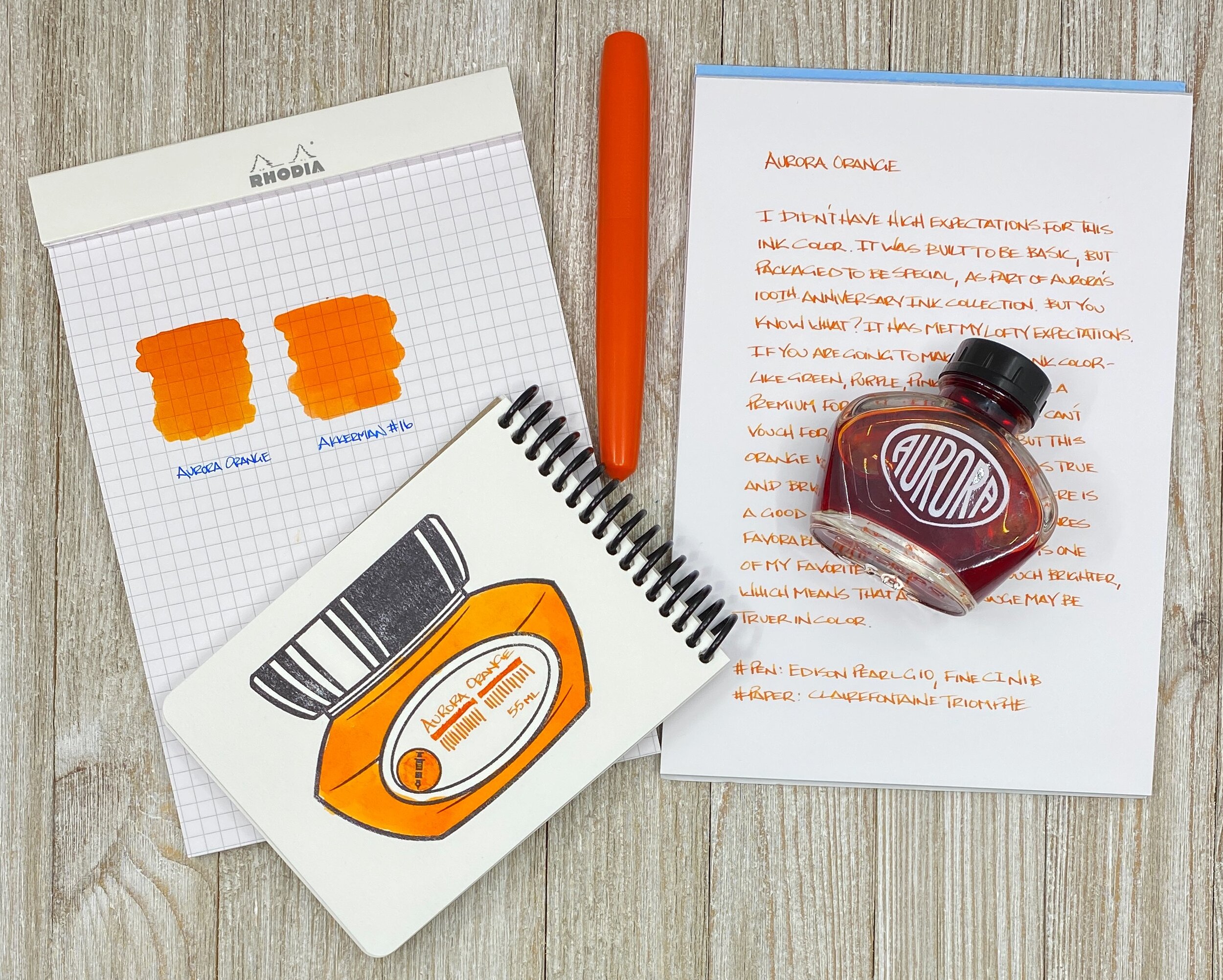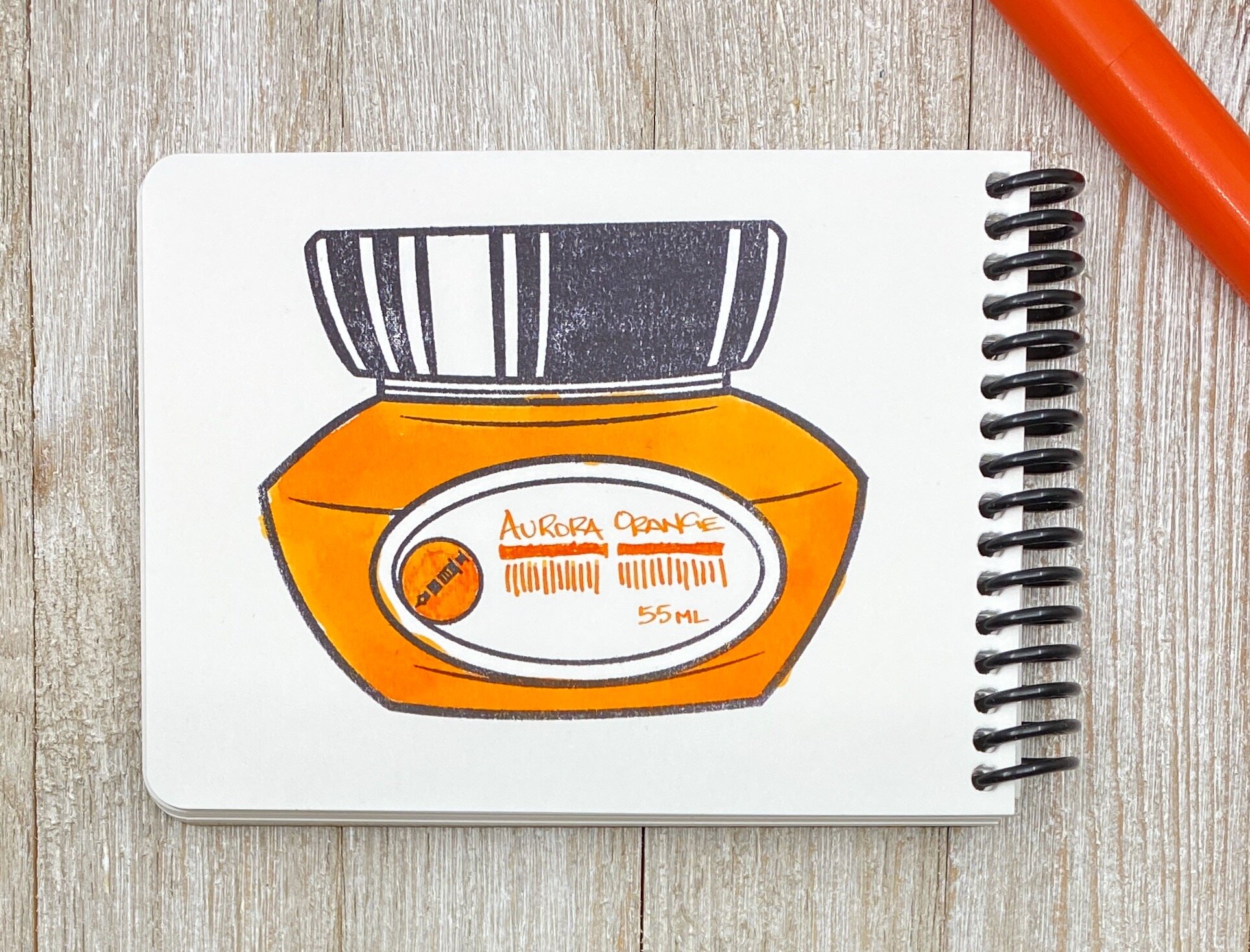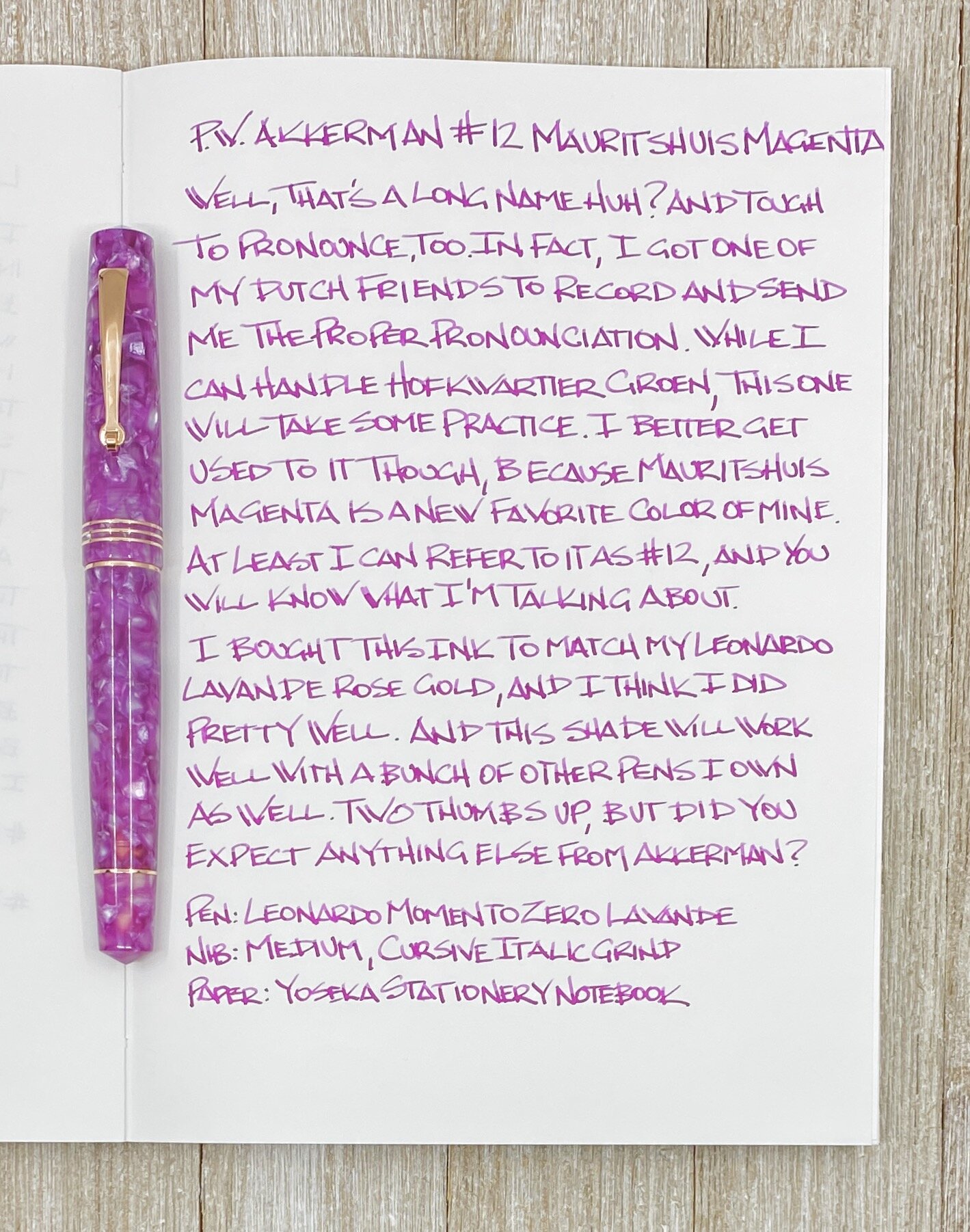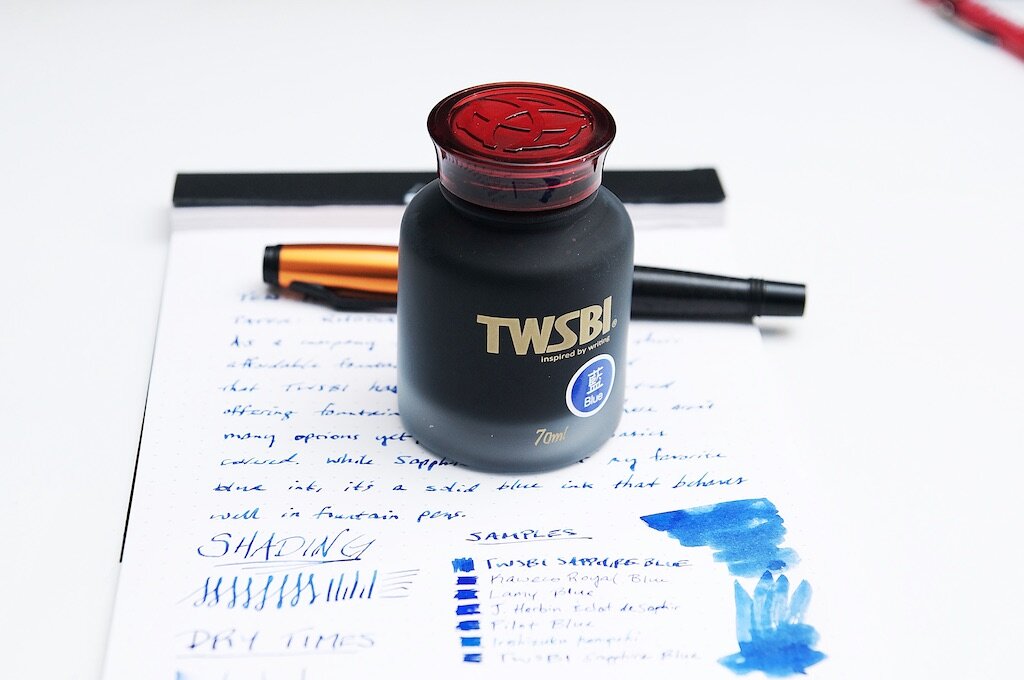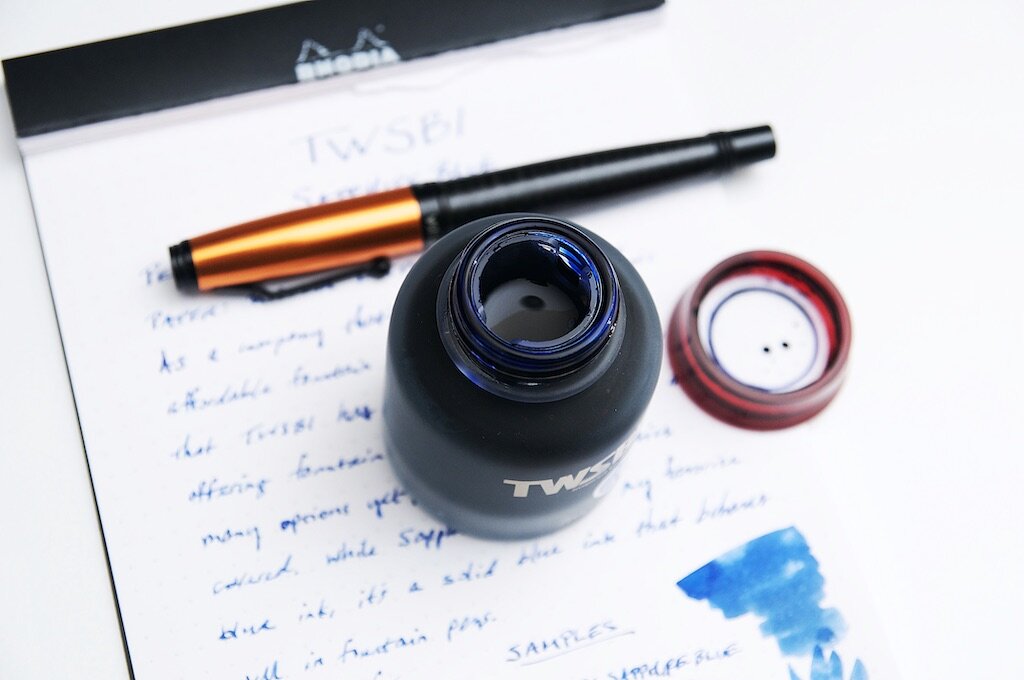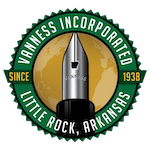As a connoisseur of orange ink, I have high expectations. And to be honest, I was little concerned about Aurora Orange meeting those expectations. There is a lot about this ink the led me to question it before testing it. But I have to say in the end that it is better than I thought it would be.
What lead me to question this ink right out of the gate? Two things: Price and product name - and a combination of the two. At $30 for a 55 ml bottle, the inks for the the Aurora 100th Anniversary Ink Set, which Orange is a part of, are priced on the premium side of the ledger. The price isn’t outrageous, and I’ve certainly paid more for less, but that brings in the second part of the equation.
What’s in a name? Many ink fans have been waiting for Aurora to branch out of their Blue and Black inky ways for years. We were thrown a bone with Blue Black a few years ago, but that was it. Even though the colors were basic, Aurora’s inks were always well respected as good performers. So why don’t they expand their basic ink offerings with other standard colors like Red, Green, Purple, and Orange? Apparently because they needed to hold them for this 10 ink, 100th Anniversary set.
That’s where my confusion set in. If I’m buying an ink that is part of a limited edition set - and priced as such - I want to feel that I’m getting something special. Yes, the etched logo bottle is a nice upgrade, but you’re selling me the most basic of shades. Shades I can get from your competition for upwards of half the price?
So, Orange. That name doesn’t make me feel special. As special as Aurora wants this set to be. As special as the price dictates it should be. Same goes for the rest of the inks, all of which are named similarly. Throw me a bone and call it Tangerine, or name it after a region in Italy. Give me something special.
Unless this ink will become part of your core offering down the line? Without the fancy bottle, and without the fancy price. Aurora Orange would be great in the $18 for 45 ml that they offer normally. Same with all of the colors in the 100th Anniversary set (Blue, Black, and Blue Black are already available without the fancy bottle for that price.) This is what I see happening eventually.
Because when you get down to it, Orange is a basic orange ink. It is your standard, core offering orange. If we rewind back to the top, I love orange inks and know a good one when I see it. Aurora Orange is a great one. It ranks up there with the best of them. It’s main feature is its shading. I found it to be a nice, moderate shader with the Fine Cursive Italic nib I was using, and on the various papers I tested with.
If you want a very traditional, exactly what you would expect orange ink, then Aurora Orange is an excellent choice. The only consideration is if that is enough for you to pay the price.
(Vanness Pens provided this product at no charge to The Pen Addict for review purposes.)

